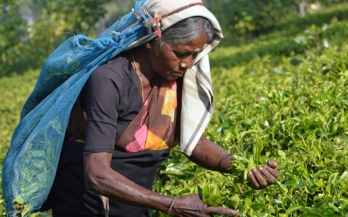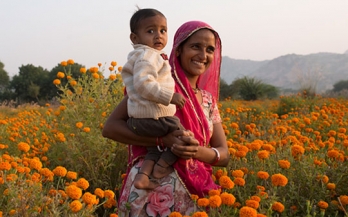Last week, GAIN co-led a five-day Executive Short Course entitled "Together for Nutrition: Public-Private engagement to improve the consumption of nutritious food". The course, the first of its kind, was made available by the six funders who together support GAIN’s Making Markets Work for Nutritious Foods programme.
What makes a great footballer? Presumably, training, determination… and muscle. Building muscle requires consuming large amounts of protein and energy, and eating meat is a highly efficient way of doing this. For the rest of us who are not athletes, however, it is less challenging to consume enough protein and energy in a standard portion size of food, and hundreds of millions of adults live a happy and healthy life without consuming any meat.
Recently GAIN and the Accesss to Nutrition Foundation (ATNF) co-hosted a meeting on "Building Business Commitments for the 2020 Nutrition for Growth Summit" in The Hague. There were 140 participants, with over 60 representatives from the business community. The host was the Government of the Netherlands and the meeting was opened by the Government of Japan, which will host next year’s Global Nutrition Summit.
GAIN and the Consumer Goods Forum co-convened a meeting on Better Nutrition for a Healthier Workforce. The purpose was to review the evidence and, if warranted, to elevate the issue beyond the rather low-key profile it currently has. What is a workforce nutrition programme? We reviewed evidence from high- and low-income countries and from corporate headquarters to supply chain settings.
The retail sector is where consumers come face to face with food. Retailers have significant influence over whether the food that consumers face is nutritious, safe, available, affordable or attractive. I have heard it said many times that the chief buyers for large food retailers are more important in influencing food choices than Ministries of Agriculture or Food.
Animal-source foods (ASFs) are controversial, political and personal. What is the evidence for their role in human health? The environment? This blog is based on a conference hosted by the University of California, Davis, titled "Aligning the Food System for Improved Nutrition in Animal-Source Foods" and aims to offer a window into recent scientific research and thinking.
Any organisation entering into a public private engagement has to be able to publicly justify using public funds. Identifying, preventing, reducing, mitigating and managing conflicts of interest is a key part of that. What are the risks of engaging with private sector?
Next year’s Global Nutrition Summit in Japan marks the start of a demanding Sustainable Development Goals (SDG) race to end malnutrition by 2030. But if we are to have any chance of crossing the finishing line in time, we have to run a different race to the one we have been running for the past 5 years.
First, how do we have to eat differently to significantly reduce malnutrition? Second, what food production systems do we have to put in place to use natural resources sustainably and live within climate change targets? The EAT Lancet Report is a landmark because it answers these two questions simultaneously.
The EAT-Lancet Commission is the first robust, extensive review of the evidence combining criteria for healthy dietary changes with environmental analyses of food system’s impacts, to find common ground that results in recommendations for food systems transformation. It is an impressive piece of work; a daunting task to include all the key components and supporting analyses into a single journal article.










